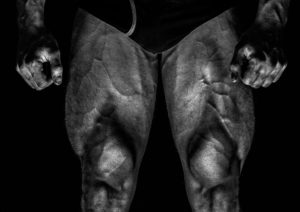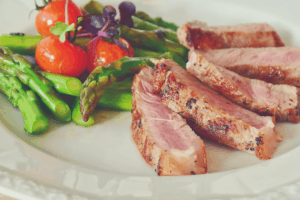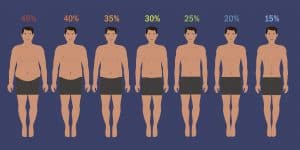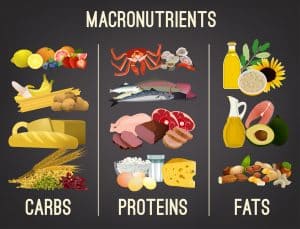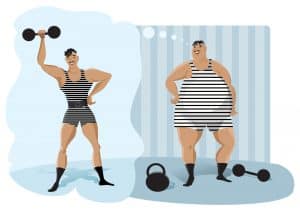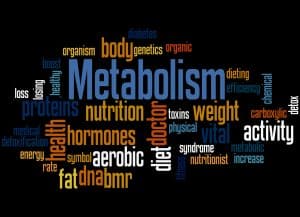I hit my three-year mark of training, but my energy was suffering daily. I knew I needed to pay attention to my nutrition. However, the idea of planning, shopping, and cooking was a daunting prospect.
It wasn’t until I got organized and gave it a try did I realize meal planning isn’t as intimidating as I thought.
This is your guide to meal planning. It takes you through each step of the method, plus we’ve thrown in some useful tips to help you succeed.
- Table of Contents
Meal Planning vs. Dieting
Severely limiting a specific food group, or restricting oneself to small amounts of particular foods, is known as dieting.
The Ketogenic diet, for example, focuses on a high fat intake with a moderate amount of protein, drastically cutting carbohydrates.
Evidence is lacking to prove dieting itself leads to permanent weight loss or even regulation. Furthermore, limiting an entire food group, such as carbohydrates or fats, can have a detrimental effect on muscle growth. It can also hamper recovery.
Where dieting focuses on weight loss alone, meal planning is an entirely different strategy. As the name suggests, it’s designed to help you plan your meals and adhere to nutritional guidelines.
You meet your dietary needs through meal planning without restricting specific groups of food. In the long-term, it’s a sustainable action plan that is more realistic than dieting.
When executed correctly, it can help you achieve a better physique and overall health. Even better, it enables you to support your workouts in a way that fuels recovery rates and muscle growth.
Four Reasons Why Every Bodybuilder Should do Meal Planning Consistently
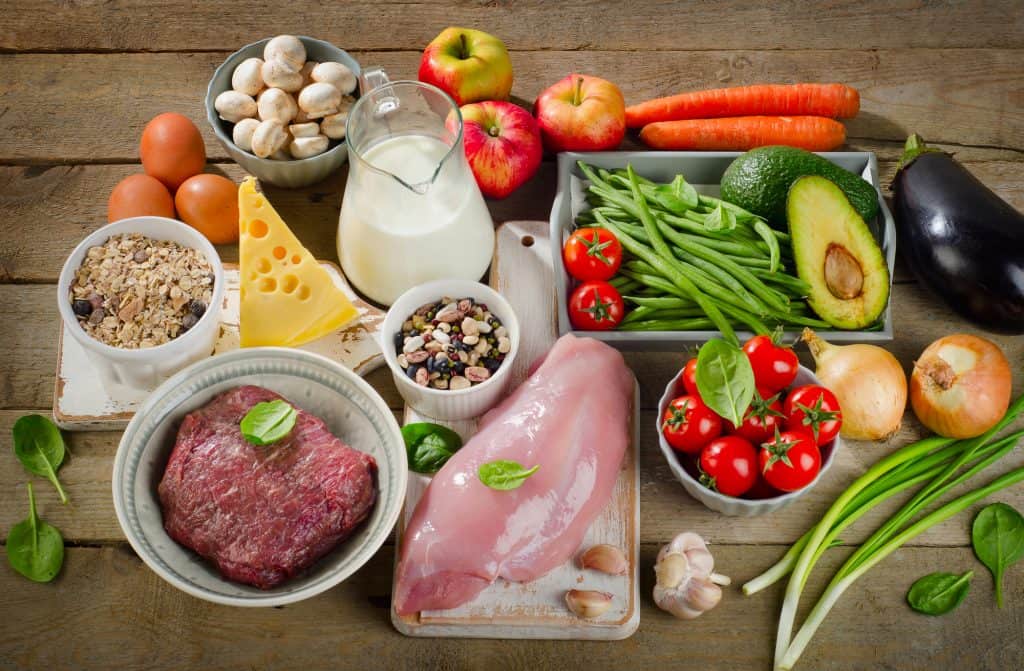
Now that we cleared out the difference between dieting and meal planning, here are a few benefits of the latter:
1
Saves Time, Money, and Stress
The financial impact of eating out could be enough to have you looking into other options.
Meal planning means a week’s worth of meals is taken care of from the get-go. You can budget and prepare ahead of time instead of stressing over it.
There’s no rushing to the store because the ingredients aren’t in the pantry. Instead, you have a set menu to look forward to after a long day.
2
Improves Diet Quality
Poor quality of diet is an epidemic that currently affects one-third of the US population.
Processed foods, saturated fats, and refined grains can leave you feeling depleted during your workout. Even worse, there’s a link between poor diet and lifestyle-related diseases such as type 2 diabetes and various cancers.
Meal planning encourages you to prepare the majority of your food from scratch, which links with an improvement in the quality of diet.
Being in control of what goes into each meal enables you to track your consumption and monitor your progress accordingly.
3
Gives Yoy Variety and Portion Control
One of our favorite benefits of meal planning is that eating a balanced diet is undoubtedly achievable. We know it’s vital for maintaining a healthy weight and reducing body fat—but your energy levels and quality of sleep will thank you too.
Once you get the basics down, you’re able to monitor your portion control and recognize how much you’re eating throughout the week.
You can also customize your meals based around your weight loss goals and workout plan.
4
Facilitates Eating for Muscle Growth
Cardio one day with heavyweights on another? Meal planning ensures you get what you need when you need it.
The timing of your protein intake and the quality of it has a significant influence on protein synthesis. This means how effective your body is at building protein molecules and distributing them for muscle growth.
What about carbohydrates? These are also factored in because they’re necessary for energy needed during those high-intensity workout sessions. With meal planning, you won’t be worried about your performance taking a dip.
The Six Steps for Effective Meal Planning
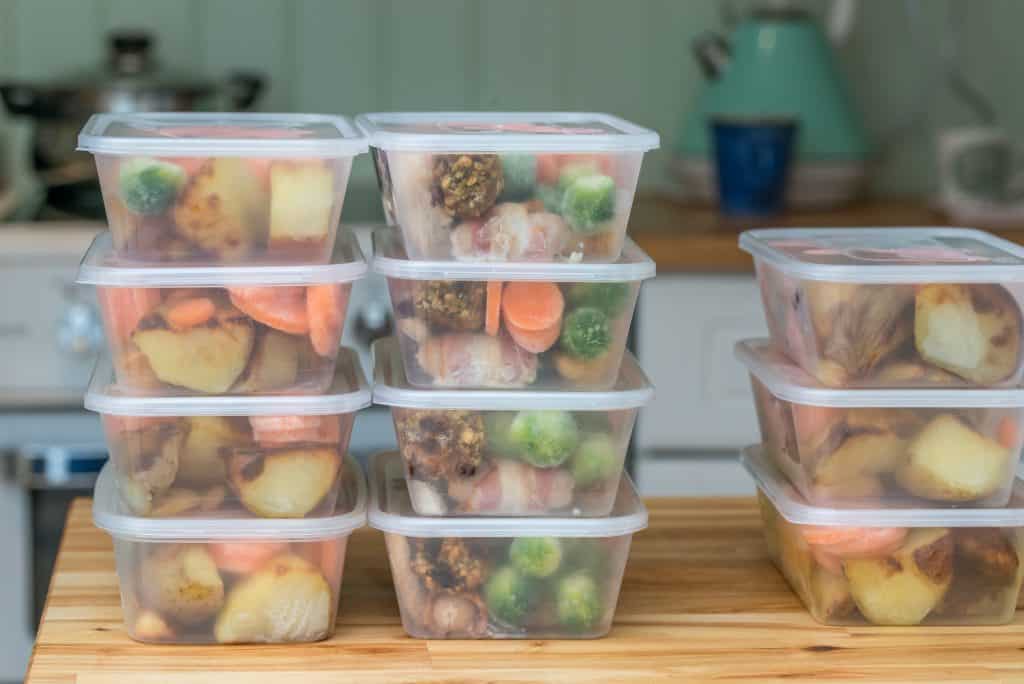
Your game plan needs to be smooth and organized to enjoy the benefits of this strategy. Below are the six steps necessary to make this happen:
1
Determine Nutrition Intake
Now comes the big question—how do you determine your nutritional needs?
First, you need to know how many calories you should eat per day. On top of your needs for when your body’s at rest, determine the calories you expend on training and in daily activities.
Your muscle gain or weight loss goals will figure into this final number.
- Calculating Your Daily Calorie Intake for Building Muscle
A good rule for gaining lean muscle is to shoot for an intake of approximately 15-20 calories per pound of your overall body weight.
Use a BMR (basal metabolic rate) calculator below to work out your macronutrients and overall caloric needs. Carbohydrates, protein, and fat make up your macros, each playing an essential role in energy levels and muscle gains.
This calculator type is a fantastic tool for determining your required daily intake, based on your weight along with your level of activity, or, TDEE (total daily energy expenditure).
Let’s use the following ratio as basic guidance:
- Protein—35 percent (could be increased to 40%).
- Carbohydrates—40 percent.
- Fat—25 percent.
Keep in mind that carbohydrates and protein contain 4 calories per gram, while fat carries 9 per gram.
For this guide, we stick with an example of a 21 years old, 6-foot male who weighs 180 pounds and is very active. The BMR calculator provides us with an intake of 2878 calories per day to maintain muscle mass. So, in order to build muscle, you would have to be increase your daily calories 15-20% over that. So, say that would give you about 3350 calories.
Use the following calculation to determine your grams per day.
Protein: 35 percent of 3350 = 1173 calories / 4 = 293 grams per day
Carbohydrates: 40 percent of 3350 = 1340 calories / 4 = 335 grams per day
Fat: 25 percent of 3350 = 838 calories / 9 = 93 grams per day
- Calculating Your Daily Calorie Intake for Fat Loss
As with muscle gain, you first calculate your TDEE to determine your caloric intake. In this case, though, you will subtract approximately 20 to 25 percent of that to be in a caloric deficit and to meet your fat loss goals.
The easiest way to do this is to multiply your TDEE by 0.75 to arrive at your target.
Using our example above—caloric intake of 2878. Multiply by 0.75, which equals 2158 calories per week.
At this 25 percent deficit, you can lose around 0.5 to 2 pounds per week (or 1.5 pounds in this example), while still maintaining an adequate energy level, hormone production, and metabolic health.
To account for fat loss, our macro ratios will be slightly different than above.
- Protein—50 percent.
- Carbohydrates—30 percent.
- Fats—20 percent.
This results in a diet consisting of 270 grams of protein, 162 grams of carbohydrates, and 48 grams of fats.
- Calculating Grams
Last but not least, to figure out your portions based on grams, invest in a solid kitchen scale. Digital options are convenient and provide various specifications, depending on your needs.
An automatic tare function is useful, for example, because it subtracts the weight of the container or bowl from the overall total.
2
Decide How Much Time You Have
You can spend all the time in the world planning delicious meals, but if you can’t execute the menus, there’s no point.
Deciding how much time you have enables you to chart your days accordingly. If you work full-time and you have a family to feed, this is even more important.
From-scratch dumplings or ravioli won’t be realistic for a family of six. Stir-fried tofu with vegetables and rice, however, could be a ticket to a successful dinner.
Are you cooking for one? You’re lucky if that’s the case as this will provide you with more flexibility in the kitchen.
If you have a particularly busy week ahead, look out for slow-cooker or foreman grill, quick or make-ahead meals. A tactic we love here is cook once, eat twice.
For example, roast a couple of chickens at the beginning of the week. Serve your dinner with a fresh side salad. A few days later, use the remaining chicken to whip up a protein-packed lunch.
3
Pick Your Meals and Schedule Them
Learn the ins and outs of recipe-based websites. Are there family favorites you love? Consider your taste and those who’ll be eating with you.
Take advantage of seasonal foods and don’t forget about shelf-life when you’re shopping. For example, frozen ingredients can be used later in the week. Fresh fish? Not so much.
Calculate the servings needed for each recipe and don’t forget about the nutritional profiles of the dishes you’re making. It helps you avoid pitfalls where healthy-eating goals are concerned.
Once you choose your meals, throw them onto a calendar. A popular option is to have it in plain sight on the fridge. Besides making it visible, it also serves as motivation when you need a nudge.
4
Make a Grocery List and Shop
Not only do you need to shop for ingredients but pay attention to the quantities required for each. Have a look through your cupboards beforehand to avoid overbuying (and creating waste).
Save time by itemizing your foods based on the grocery store layout. For example, group together your dairy items while listing your meat further down the page.
- Best Foods to Build Lean Muscle
Don’t forget about fuel for your workouts. Five top foods for retaining and building muscle include the following:

Eggs:
one study shows that the muscle-building response from those that ate whole eggs vs. egg whites was 40 percent greater overall. You’ll get around 6 grams of protein in one large egg.

Greek Yogrut:
similar to its plain counterpart, it comes from milk. However, this thick creamy version contains more protein per cup (20 grams) compared to that of regular yogurt (13 grams).
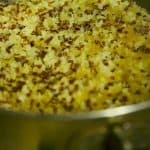
this ancient seed functions as a complete protein and slow-digesting carbohydrates. It contains all the essential amino acids, unlike many other plant proteins. You’ll get about 8 grams of protein per cup.
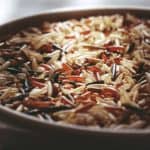
Brown Rice:
is more flavorful than the white variety, in my opinion, but it’s also slow to digest providing long-lasting energy for that workout later in the day.
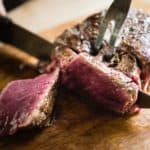
Beef:
it’s a big one for protein content (19 grams per 3 ounces). Furthermore, it contains iron, zinc, and B vitamins. Go for lean cuts—round or loin, as opposed to chuck which comes from a fattier portion of the cow.
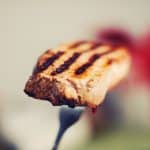
Chicken:
A bodybuilding staple. If you’re cutting, stick with the breast because it is the leanest. If you’re bulking or maintaining, chicken thighs are the most tasteful.
Whole foods should be your priority. However, protein powder can supplement your diet. Whey protein contains around 15 – 24 grams per one scoop.
5
Time to Prep and Cook
Last but not least, get yourself in the kitchen. We recommend choosing a day for prep work, possibly on the weekend.
Will you be using tomato sauce not once but twice? Make two batches in advance, so they’re ready to go come mealtime.
Grate cheese, chop vegetables and marinate tomorrow’s meat—the more done at once, the better.
Some may even take it a step further and use designated containers for specific days. The point is, find a system that works for you and stick with it. It may involve some trial and error at the start, but as I’ve learned, practice makes perfect.
6
Track Your Progress
Strength-training diets will vary over time due to muscle gains and workout intensity. If muscle mass or your duration of weight training increases, eating more is essential for maintenance.
- Tracking for Building Muscle
Taking measurements is necessary. If you have a scale at your disposal, keep an eye on your numbers to see if your muscle goals are causing an increase in weight.
Does your scale indicate your weight is consistent or has it gone down? You need to make some dietary changes to up your intake accordingly.
Has your weight increased? The reason could be muscle mass, but also body fat. If your jeans are feeling snug, you could be overeating.
- Tracking for Losing Fat
Watching that scale is just as important when aiming for fat loss. You want to see a one to 2-pound drop every week if you’re losing weight safely. If you see an increase or your weight remains around the same, double-check your macros and activity level.
It could be a matter of adding another cardio session or switching out that evening snack with a lighter option.
In both cases, determine the reason, so you’re able to adjust your diet as needed.
- Tracking Lean Mass Measurements
Check out some body fat calipers. This handy tool measures the thickness of a skin fold with its underlying fat layer. You’ll find instructions included on how to convert these numbers to determine your body-fat percentage.
The key locations for men include the chest, thighs, and abdominals. For women, measure your suprailiac (or side waist, approximately 1 inch above the hip bone), triceps, and thighs.
1. Take your body weight in pounds and multiply that by your body-fat percentage to equal your total amount of body fat. 2. Subtract this total from your original weight to determine your mass without fat. Don’t get too thrilled—this number won’t be all muscle. Included are organs and bones. However, you’ll need this figure during the final calculations. 3. You now have your total body fat and fat-free mass determined. Note down the numbers so you can compare them as time goes on.
Keep a journal, jot it on your tablet, smartphone, or someplace you can refer back to quickly. This allows you to remain organized and motivated.
Here’s an example of calculations following the instructions above:
step #1
Body weight (180 pounds) x body-fat percentage (20 percent) = body fat
180 x 0.20 = 36 pounds body fat
step #2
Body weight – 36 = fat-free mass
180 – 36 = 144 pounds fat-free mass
step #3
Body weight = 180 pounds
Body-fat percentage = 20 percent
Total body fat = 36 pounds
Fat-free mass = 144 pounds
If your food intake is correct and you’re exercising regularly, your fat-free mass should show an increase.
Three Nutrition Tips to Keep in Mind When Meal Planning

We’ve already mentioned the importance of keeping proteins lean and limiting processed foods. What about other nutrition factors?
1
Frequency Depends on You
The question of “How many meals per day?” is a highly contested one.
In recent years, smaller and more frequent meals have been touted to regulate metabolism, keep blood sugar under control, and suppress your appetite. Studies show that this isn’t the case necessarily.
Where blood sugar and appetite suppression are concerned, research indicates that fewer meals a day are better.
If you’re looking to lose weight, three to four main meals daily will suffice. Light, healthy snacks in-between may curb your hunger and avoid overeating come mealtime.
For muscle gain, increasing your caloric intake can be challenging. Are you hitting the running trail in the morning and the weight room later in the evening?
You may be following the three-to-four meal-a-day routine, but it’s essential to factor those workout snacks into your planning.
2
Learn to Like Water
Keep your performance where it needs to be by remaining hydrated—and not with sugar-loaded energy drinks. Not only will these widen your waistline, but they also might lead to a crash later on.
Hydrating is especially important post-workout when you’ve lost fluids through sweating. Keep a water bottle in your bag and chug it once you’ve cooled off. You can also replenish depleted minerals by adding electrolytes to the mix.
3
Consume Carbs Strategically
All carbohydrates aren’t equal.
Complex carbs including vegetables and whole grains such as quinoa are slow to digest, high in fiber, and raise blood sugar gradually. These are rarely problematic, so enjoy them to their fullest.
On the other hand, simple starchy carbs such as white bread and pasta are quick to digest and cause blood sugar to rise rather rapidly. The timing of when you consume these is important for energy and workout recovery.
Enjoy some toast before your morning workout or a bowl of pasta afterward. In either case, your body will use carbohydrates to fuel drained energy reserves. Take a tactical approach when partaking simple carbs—to ensure they don’t go to waste.
Meal Planning Example for Muscle Building
Based on our example numbers in the nutritional intake section,we now know what our current calorie intake should be per day. We divide the total grams between three meals and two snacks.
Because we’re looking to build lean muscle, we incorporate some of the protein sources listed with our grocery list.
For simplicity’s sake, we stick with individual portions here, but as mentioned earlier, you could be feeding your family.
In that case, you may only measure your quantities and share the remainder. If your shopping included a sufficient amount of serving sizes, you should be good to go.
To create a meal plan that fits your requirements, adjust the servings based on your macros and calories.
Meal 1
Two large whole eggs
1 cup Eggs with shredded cheddar cheese - 0.25 cup
Cooked oatmeal - 1.5 cup
Banana - 1 piece
Meal 2
two scoops of whey protein - 2 scoops
strawberries - 1 cup
Meal 3
Lean ground beef - 5 ounces
Hamburger bun - 1 bun
Mixed greens - 2.5 cups
Olive oil dressing - 1.5 tablespoon
Banana - 1 piece
Meal 4
Shredded chicken - 4 ounces
Cottage cheese - 1 cup
Whole-wheat crackers - 12 pieces
Meal 5
Chicken breast - 6 ounces
Quinoa - 2 cups
Vegetable medley - 2.5 cups
Olive oil dressing - 1.5 tablespoon
You can see that for a 180-pound individual who qualifies as very active, their calorie intake and macro percentages are substantial. To reiterate, this meal plan includes around 361 grams of carbohydrates, 216 grams of protein, and 64 grams of fat.
Of course the calculations are just bulk estimates. For accurate calculations, use the calculators above.
Meal Planning Example for Fat Loss
With a 25 percent caloric deficit, intake will be 2166 calories per week until your weight loss goals are met.
Our calculations earlier in the article determined this would equal in the region of 270 grams of protein, 162 grams of fat, and 48 grams of carbohydrates.
We’ve tweaked the meals from above so you can easily spot the differences in portion size between a muscle-building diet and one aiming at fat loss—higher in protein and fat, lower in carbs.
These figures are approximations for our 180-pound example male. Therefore, adjust portion size by your calories and macro calculations to suit your needs.
Meal 1
One large whole egg with 1 cup of egg whites
peanut butter - 1 tablespoon
Greek yogurt - 1.5 cup
Apple - 1 piece
Meal 2
two scoops of whey protein - 2 scoops
strawberries - 1 cup
Meal 3
Lean ground beef - 7 ounces
Mixed greens - 2.5 cups
Olive oil dressing - 2 tablespoons
Meal 4
Cottage cheese - 1.5 cup
Cauliflower crackers - 8 pieces
Meal 5
Chicken breast - 8 ounces
Quinoa - 1 cup
Vegetable medley - 1.75 cups
Olive oil dressing - 2 tablespoons
The Takeaway
With some organized scheduling, smart food choices, and careful calculations, meal planning is not the monster some may fear it is.
Get the hang of it, and you might even find meal planning enjoyable. We point you in the right direction with our guide and hope you take advantage of it.
See what happens to your gains when you make nutrition a priority.


